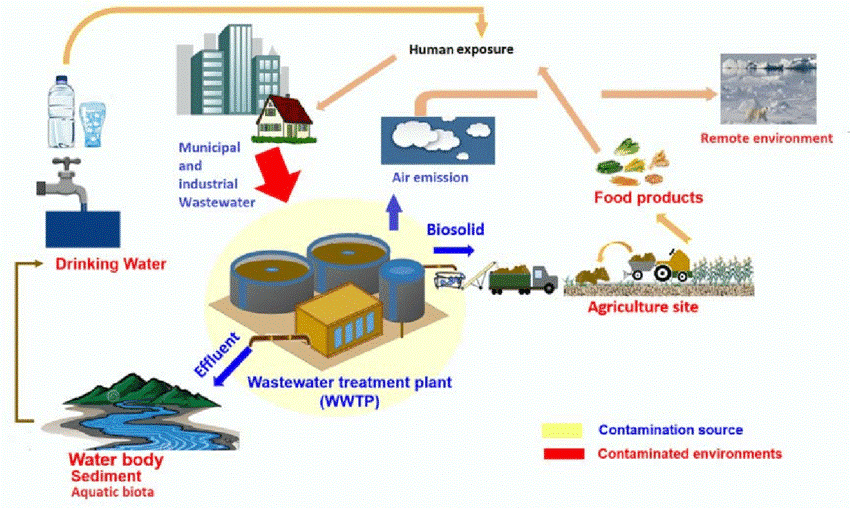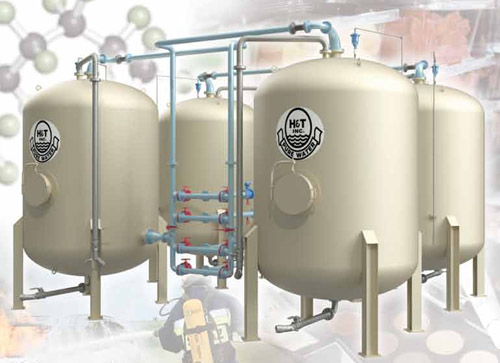How PFAS Treatment Guarantees Clean and Sustainable Water
The visibility of PFAS, frequently called "for life chemicals," poses significant challenges to water quality and public health and wellness. Advanced therapy innovations, consisting of activated carbon adsorption and membrane layer filtering, have become effective options to mitigate these contaminants. By employing these techniques, areas can not only accomplish cleaner water but additionally foster lasting techniques that protect ecological communities. The ramifications of these treatments extend past instant wellness benefits; they increase essential questions about long-lasting water monitoring techniques that should be dealt with to ensure a resilient future. What does this mean for our strategy to water sustainability?

Recognizing PFAS Contamination
PFAS, or per- and polyfluoroalkyl materials, have actually become a significant environmental problem as a result of their prevalent occurrence and determination in the setting. These artificial chemicals have been made use of in numerous industrial applications and consumer products, consisting of non-stick kitchenware, waterproof clothing, and food packaging, as a result of their unique homes such as water and oil resistance.
The contamination of soil and water sources by PFAS takes place primarily with industrial discharges, firefighting foam use, and leaching from garbage dumps. pfas management. As soon as released, these substances are resistant to degradation, causing their buildup in the atmosphere. This perseverance raises critical problems, as PFAS can travel cross countries through groundwater and surface area water supply, impacting drinking water supplies and environments

Health Threats of PFAS
The persistence of PFAS in the environment raises substantial health and wellness concerns for individuals revealed to these materials. Study has actually linked PFAS exposure to various negative wellness effects, including immune system dysfunction, liver damage, and boosted danger of particular cancers.
The ubiquity of PFAS in customer items, such as non-stick pots and pans, water-repellent fabrics, and food packaging, further intensifies the threat of direct exposure. Drinking water polluted with PFAS is a substantial issue, as these chemicals can seep right into groundwater sources. Prone populations, consisting of children and those living near industrial websites, may deal with heightened risks because of their creating systems and potential for greater direct exposure degrees.
As awareness of these health threats continues to grow, regulatory companies are beginning to establish standards for PFAS levels in alcohol consumption water. Public health campaigns are important to mitigate exposure and shield communities from the long-lasting effects of these dangerous materials.

Cutting-edge Treatment Technologies
Exactly how can we efficiently deal with the obstacles presented by PFAS contamination in water resources? Innovative treatment technologies are becoming essential options in the quest for clean water. These methods concentrate on the removal or devastation of per- and polyfluoroalkyl substances (PFAS), which are infamous for their perseverance in the atmosphere.
One appealing approach is adsorption making use of advanced materials, such as triggered carbon and ion exchange materials. These products have actually shown effectiveness in capturing PFAS particles from water. An additional noteworthy modern technology is membrane layer filtration, which utilizes nanofiltration and reverse osmosis to different pollutants at the molecular level, therefore giving an obstacle against PFAS.
Furthermore, progressed oxidation processes (AOPs) employ strong oxidants to break down PFAS substances right into safe by-products. This approach is especially efficient for treating extremely infected water sources. Bioremediation strategies, employing details microorganisms, are likewise being checked out to deteriorate PFAS.
As study proceeds, crossbreed systems that combine multiple innovations may supply improved performance, dealing with the complexities of PFAS contamination. The development and implementation of these ingenious treatment innovations are important steps towards making certain the safety and sustainability of our water sources.
Benefits of Efficient PFAS Therapy
Successfully treating PFAS contamination in water resources substantially boosts public health and wellness and environmental safety. PFAS, often referred to as "for life chemicals," are immune to destruction and can build up in the body, resulting in serious health dangers such as cancer, liver damage, and body immune system dysfunction. By applying effective treatment techniques, communities can reduce direct exposure to these harmful materials, eventually enhancing the health results of their populations.
Additionally, effective PFAS treatment adds to the conservation of neighborhood environments. Infected water can detrimentally impact water life and interfere with the delicate balance of neighborhood habitats. By making certain tidy water, treatment procedures safeguard biodiversity and maintain ecological stability.
In addition, efficient PFAS remediation can cultivate public self-confidence in water top quality. When communities are guaranteed that their alcohol consumption water is without unsafe contaminants, it promotes a feeling of security and well-being. This count on is important for community involvement and support for ongoing water management campaigns.
Future of Water Sustainability
Amid expanding issues about water top quality and scarcity, the future of water sustainability pivots on ingenious methods and collective initiatives. As communities encounter the looming dangers of contaminants like PFAS, the development of innovative therapy modern technologies is vital. These innovations not just concentrate on the removal of dangerous compounds however additionally promote the reuse and recycling of water, therefore minimizing overall demand.
Moreover, effective water administration plays a crucial function in making certain sustainable practices. Policymakers have to incorporate clinical research with regulative frameworks to establish clear guidelines for water usage and treatment. Stakeholder engagement, consisting of neighborhood areas and industries, fosters a sense of shared obligation and motivates sustainable practices across different markets.
Financial investment in facilities is likewise essential; upgrading aging systems to integrate contemporary filtration and filtration methods can significantly enhance water top quality. Welcoming environment-friendly modern technologies, such as all-natural purification systems, can give environment-friendly remedies.
Inevitably, the future of water sustainability depends on an all natural approach that incorporates technology, policy, and neighborhood participation. By focusing on these components, we can secure our water resources for generations ahead, making sure tidy and sustainable water for all.
Verdict
To conclude, the efficient therapy of PFAS is vital for making sure clean and lasting water. pfas waste management By using innovative technologies such as turned on carbon adsorption, membrane filtration, and progressed oxidation procedures, communities can considerably lower the wellness threats related to these pollutants. The integration of these therapy techniques sustains ecological community security and boosts biodiversity. Ultimately, durable PFAS treatment approaches add to lasting resilience in water administration, promoting public depend on in water top quality and advertising lasting methods.